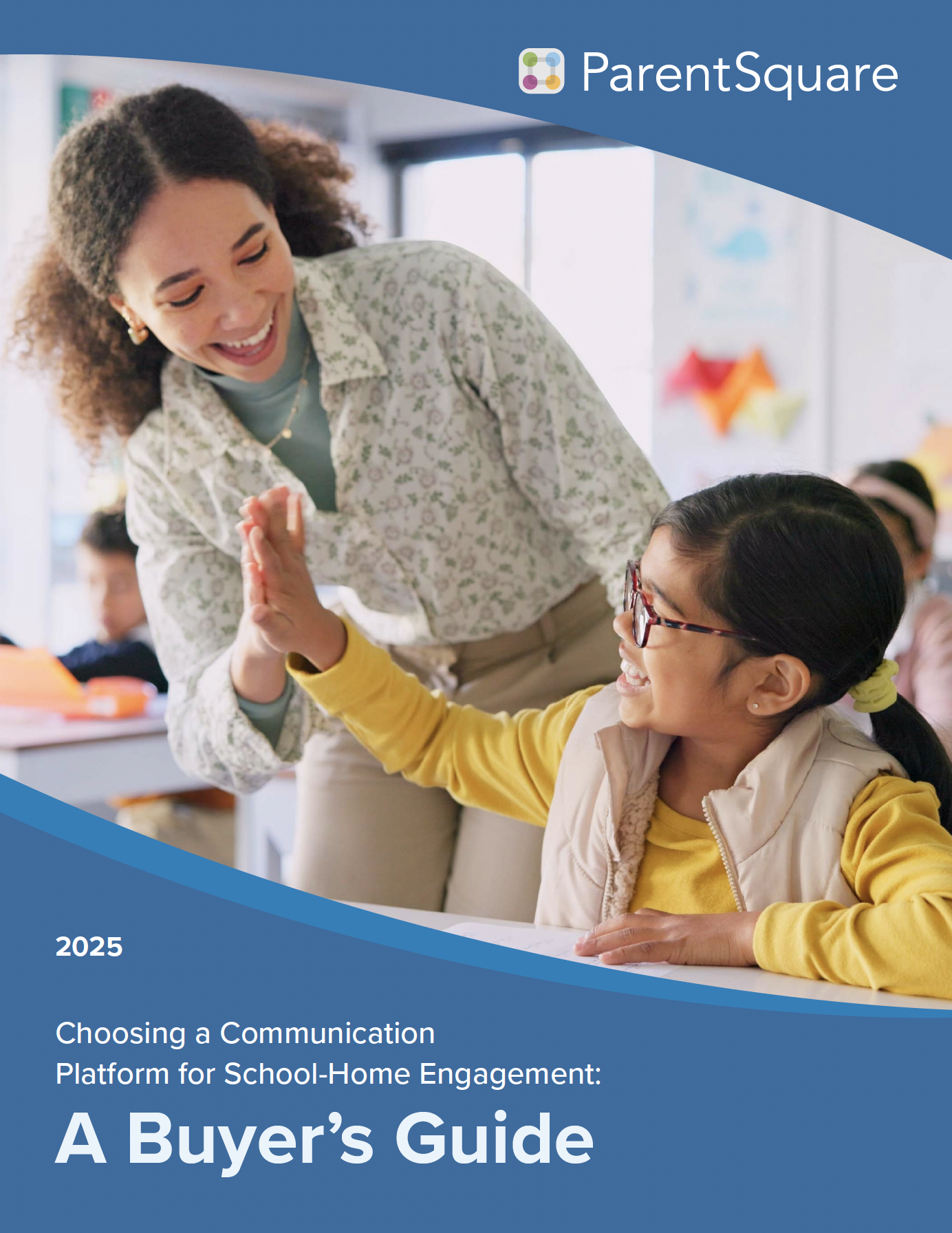
Checklists are essential especially when considering options for new technology platforms like a home-to-school communications system. And that’s what ParentSquare customer Pete Just shared in his recent article that was published by District Administration.
In the article, Just—who is Chief Technology Officer for the Metropolitan School District, Wayne Township in Indiana—shared 30 key questions districts should ask as they navigate the process of selecting the best solution for their unique communications needs and that of their schools, parents, guardians, teachers, students, administrators, and staff.
Before your district selects a unified district communication platform, it’s important to define what’s needed to support all stakeholders. Below are central factors Just suggested considering when choosing a unified district communication platform:
- Will it work for your school?
Selecting a communication platform with your entire school community in mind is important to ensure successful communications. One unified platform for all school-to-home messaging that involves all stakeholders is key for seamless communication. Multiple forms of communication including voice, text, app, and email tools, as well as two-way translation and language preferences are all important features to ensure equitable access for all members of the school community.
- Can parents and guardians use it effectively?
Parents and guardians should be able to easily navigate all functions of the platform, including changing language preferences if necessary. Parents should only receive notifications for updates that are relevant to their child, and additional features like preferences for mode and frequency of communication give parents greater control over the communications they receive. The platform should also allow parents to make secure and easy changes to their preferred contact details and school information.
- Does it simplify communication for teachers?
Teachers need a communication platform that simplifies their communications-based tasks and frees up time in their daily schedule. A unified platform ensures teachers have a direct link to all stakeholders in the school community––including parents, students, and administrators––without having to switch platforms or learn multiple communication tools.
- What features are there for students?
Secure, direct communications between students and teachers are important to build trust and develop important student-teacher relationships. Notifications and alerts can help students keep track of communications they receive, including individual or class-wide messages and posts. The ability to engage with and comment on posts further ensures clarity in all communications.
- Does it offer the features school administrators need?
Building administrators need to not only be able to address all stakeholders, but also communicate with various staff groups internally when necessary. The ability to monitor and oversee communications coming from the school, teachers, and parents ensures transparency and enables administrator oversight. It’s also helpful for administrators to be able to delegate tasks by assigning special permissions.
- How can district administrators and communications staff utilize the platform?
District administrators and communications staff need complete administrative oversight, security, and reporting in a unified communication platform. Embedded features such as forms, conferences, attendance records, and progress reports further streamline the communication of important information to necessary stakeholders. Additionally, with all parent contact information consolidated in one place, districts should be able to send emergency alerts instantly and simultaneously to all contacts.
- Does it provide sufficient data privacy and security?
Streamlined IT support is an important factor of a unified district communication platform, as the entire school community will use this platform to stay connected and informed. Single Sign-On can save time and simplify integration of a new platform with tools already in use, reducing time-wasting manual account merges and password resets. Most importantly, it’s important to select a communication platform that adheres to student privacy principles and education privacy agreements.
Pete Just is right. By replacing multiple communications platforms with a unified system, schools can streamline communications and develop better connections in the school community. So if your district is ready to make the transition, check out these 30 questions to ask when selecting a unified district communication platform.







